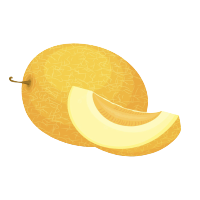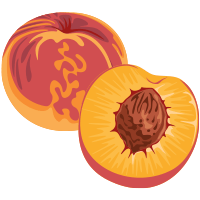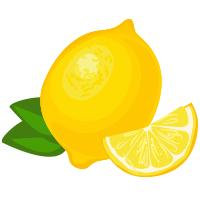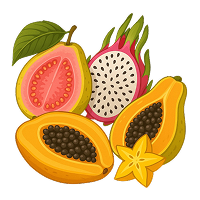Rossj-Bass is made from the Chardonnay grape, but you use up to approx. 5% Sauvignon Blanc in some vintages. The grapes come from 3 vineyards with a total of approx. 7 ha. The two fields “Rossj” and “Bass” – both planted in 1984 – are located near the village of Treiso near Barbaresco. “Rossj” is named after Angelo and Lucia’s youngest daughter Rossana. It is located in approx. 330 m.a.s.l., on a soil consisting of volcanic and firm, calcareous soil. “Bass” is lower, in approx. 250 m.a.s.l. (hence the name Bass = low), where you find a richer, but loose soil. The third Chardonnay vineyard is located in Serralunga d’Alba (380 m.a.s.l.), with a rich, calcareous clay subsoil. The mixture of the wines from the three different fields gives great complexity and harmony.
Year 2020 was quite atypical for Piedmont in several ways. The winter was one of the driest and warmest in the past 50 years, and the rain showers that usually fall in winter and spring all came in summer. For the first time in many years, Gaja’s vineyards were not damaged at all by the otherwise frequent hailstorms. Apart from two periods at the end of May and at the beginning of October of extreme heat, the summer was marked by an alternation between heat, showers and cool days. These temperature differences gave the white wine grapes a great aroma as well as a good bite and acidity. A generally sunnier period from mid-August to the end of September ensured more sugar and fullness, not least for Nebbiolo. The white wine grapes were harvested over a longer period than usual. The must was fermented in steel tanks and the wine was then aged for 6 months in one to two year old barriques.
It is fresh and delicious citrus notes and crisp nuances of wild flowers, melons and white peaches that dominate in Rossj-Bass 2020. In the taste, the wine is very “vibrant”, almost delicate for a Chardonnay, with delicious exotic notes of mint and peppermint. A very appetizing and charming wine. Suitable for lobster, shellfish and fish.
Angelo Gaja
At GAJA, every detail in production undergoes the strictest control. The vineyards – both those around the house in Barbaresco and in all the other areas where GAJA grows wine today – are cared for in accordance with their importance – namely as the source of everything! A source from which, however, you do not drain the last drop – on the contrary, part of the reason for the exceptionally high quality of the wines from GAJA is that the harvest yield per ha. in many cases is VERY low. Of course, this does not least apply to the best fields such as Sori Tildin, Sori San Lorenzo and Costa Russi.
At the age of 21, Angelo Gaja took over the winery in 1961 as the 4th generation in the family. For more than five decades, he was the innovator in Piedmont, and the wines from GAJA are still considered the ultimate top in the area – ‘no one above – and no one next to’. In recent years, the 5th generation has continuously been driven into position, and the daughters Gaia and Rossana and the son Giovanni have had the best teacher, so the future definitely looks bright for this unique wine family. However, Angelo GAJA has not completely let go of the reins yet, so the daughters have continued to have their teacher by their side… The wines from GAJA have never been cheap, but they offer unique wine experiences, and there is quality and taste for every penny!
Gaja is Gaja, and here people continue to go their own way. Therefore, it is almost obvious that all fields have naturally been farmed biodynamically for the past several years, so there is no reason to boast about it – and certainly not in the form of certifications, which simply “disrupt” the designed labels…
Langhe
Few places on earth are more beautiful than Piedmont on a sunny day in autumn. The rolling hills with vineyards standing in golden colors with the snowy Alps in the background and blue sky above. It looks like pure magic. What characterizes autumn in Piedmont is now otherwise mist, which occurs when the cold mountain air from the Alps meets the warm air from the lowlands.
Langhe DOC/DOP covers the whole of the Cuneo province in north-west Italy and thus spans a wide spectrum of wines – both red and white. The name Langhe is used i.a. for wines from e.g. the municipalities of Alba, Roero, Dogliani, but also from the districts of Barolo and Barbaresco, if they are not produced from 100% Nebbiolo, as required for these particular wines. If DOC/DOP Langhe is followed by a grape variety on the label, the grape variety must constitute min. 85% of the wine.




